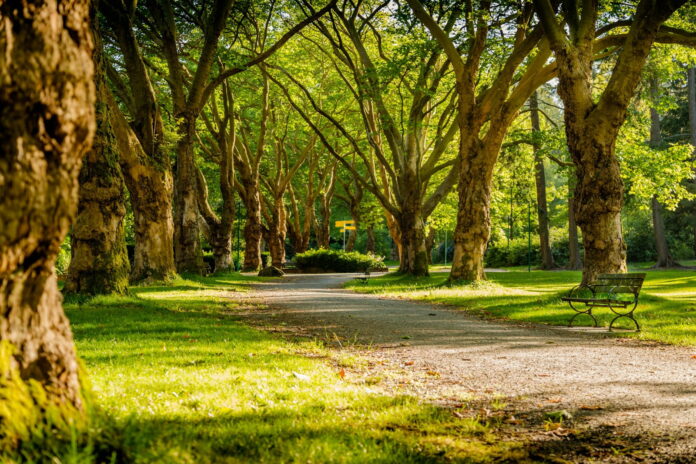Urban green spaces serve as the lungs of the cityscape, offering more than just a visual respite from concrete and steel. These verdant havens are proving to be wise investments with tangible returns. In recent years, there has been a growing recognition of the economic advantages that come from financing urban green spaces, particularly in terms of public health benefits and enhanced property values.
Assessing Urban Green Space ROI
The ROI from investing in urban green spaces is multi-dimensional, encompassing environmental, social, and economic benefits that can be quantified with the right tools. Economically, green spaces can reduce city expenses; for example, trees and vegetation naturally cool urban areas, which can lower the costs associated with air conditioning and combat the urban heat island effect. Additionally, green spaces can mitigate flood risks by enhancing natural water absorption, potentially saving millions in urban infrastructure repair. On a social level, these spaces also contribute to community cohesion and safety, factors that can enhance the overall attractiveness and competitiveness of a city.
When considering the ROI of urban green spaces, it is crucial to factor in the long-term cost savings and value generation. Studies have shown that well-maintained parks and recreational areas can lead to increased tourism and local business revenues. Moreover, investment in green spaces is often linked with sustainable urban development, which is increasingly important for attracting modern businesses and environmentally conscious residents. As cities face the challenge of attracting and retaining a vibrant workforce, investments in green infrastructure become a selling point that can tip the scales in their favor.
The quantification of these returns, however, remains complex. While some benefits are direct and measurable, others are indirect, accruing over time and through the interplay of various social and environmental dynamics. To accurately assess the ROI of urban green spaces, cities need to adopt comprehensive valuation models that encompass both immediate and long-term benefits, recognizing that the true value of these investments often extends far beyond the ledger.
Public Health Benefits Unveiled
The public health benefits of urban green spaces are extensive and well-documented. These areas provide a natural setting for physical activity, which is crucial in combating obesity and related diseases. Regular access to green spaces has been linked to lower body mass index (BMI) levels in urban populations, underscoring their role in promoting healthier lifestyles. Moreover, the mental health advantages are significant; natural settings are known to reduce stress, improve mood, and increase overall psychological well-being, contributing to a more productive and healthier populace.
Green spaces also play a vital role in improving air quality, as trees and plants absorb pollutants and produce oxygen. This natural filtration system can lead to a decrease in respiratory diseases, such as asthma, especially in children and elderly populations that are most vulnerable to poor air quality. Furthermore, green spaces can encourage social interaction, which is an essential aspect of mental health. Communities with accessible parks and gardens tend to have stronger social ties, leading to increased social support and a sense of belonging, which are critical factors in mental health and resilience.
The integration of green spaces into urban planning is a proactive approach to public health that can lead to significant cost savings for healthcare systems. By providing preventative health benefits, cities can reduce the burden on medical services and improve overall public health outcomes. These spaces act as a natural health intervention, making the investment in green infrastructure not only a matter of environmental concern but also a strategic public health policy.
Green Spaces Lift Property Values
The presence of urban green spaces is a significant boon to property values. Properties that are adjacent to or near well-maintained parks and gardens typically command higher prices, a phenomenon known as the “park effect.” This price premium reflects the desirability of living near natural, recreational amenities and is a clear indicator of the value that residents and investors place on green spaces. As a result, cities that invest in these areas can see a substantial increase in property tax revenues, further justifying the initial investment in green infrastructure.
Real estate markets respond positively to the aesthetic and recreational benefits provided by green spaces. They enhance the visual appeal of a neighborhood, offering peaceful vistas and a sense of openness that is highly prized in dense urban environments. Additionally, these spaces can serve as community hubs, hosting events and fostering social interactions that contribute to the vibrancy of an area. This community appeal translates into higher demand for properties, spurring real estate development and neighborhood revitalization.
The investment in urban green spaces signals a commitment to sustainability and quality of life, both of which are increasingly important to homebuyers. In a market where eco-friendly features and sustainable living are growing priorities, proximity to parks and natural areas can be a differentiator for properties. This trend suggests that the economic benefits of green spaces will continue to grow as societal values shift towards greater environmental consciousness and as urban populations seek out healthier lifestyles balanced with nature.
The economic case for investing in urban green spaces is compelling. The ROI of such investments is reflected not only in direct financial terms but also in the substantial public health improvements and property value enhancements they bring about. By promoting physical and mental well-being, contributing to cleaner air, and fostering community engagement, green spaces stand out as a wise investment for the future of urban centers. As cities continue to expand and the demand for livable, sustainable environments increases, the strategic financing of urban green spaces will remain a crucial element in urban planning, serving as a testament to the far-reaching benefits that nature offers to both our economies and our lives.
